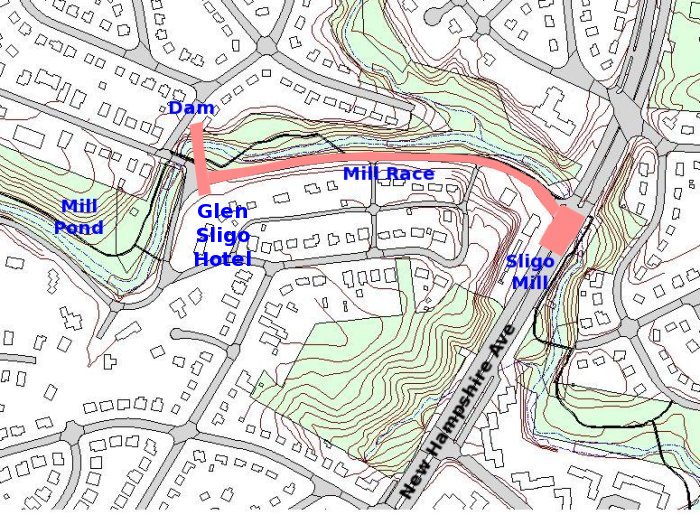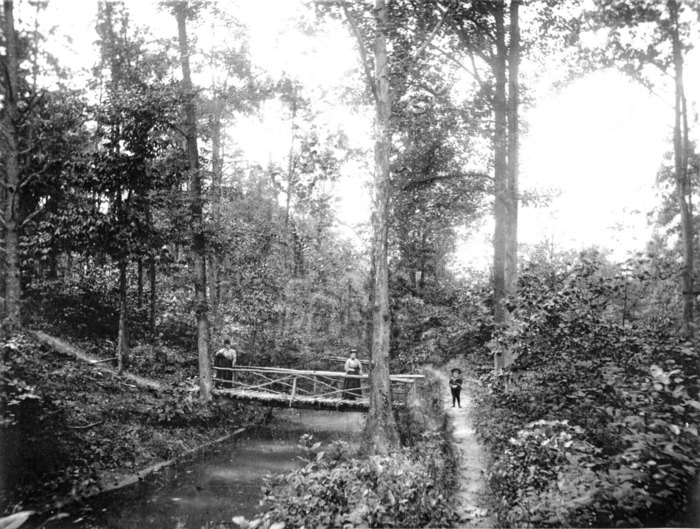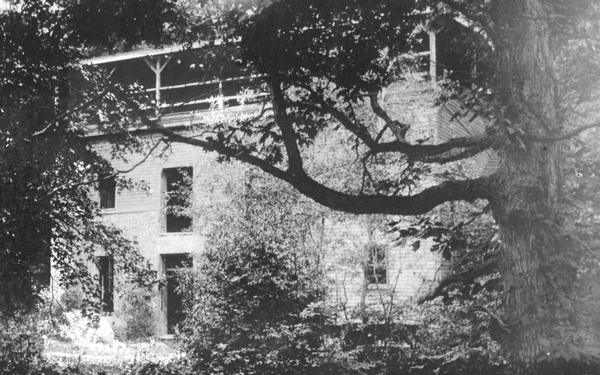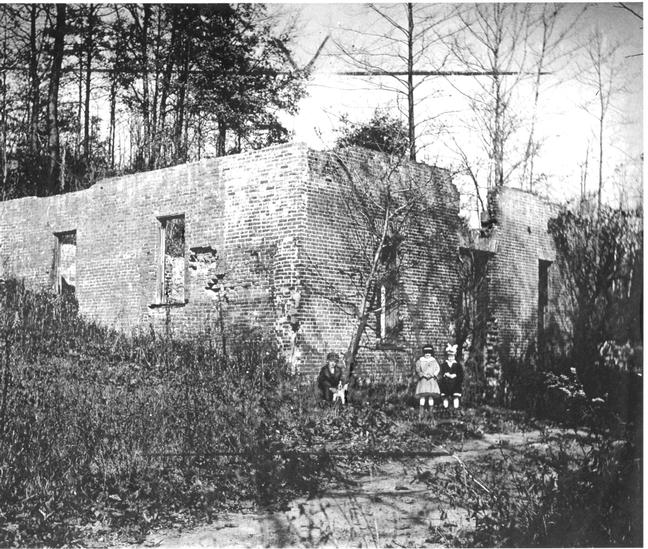

Sligo Mill
The water of Sligo Creek was dammed near the current intersection of Flower Avenue and Sligo Creek Parkway. A mill pond formed behind the dam and occupied the land of the current playground and picnic area at the intersection. Water was led down a mill race at the level of water behind the dam to the mill located in the middle of what is now New Hampshire Avenue. The path of the mill race follows the current Sligo Creek Parkway.

Elie Williams had difficulty raising his share of the funds. The Carrolls, his wealthy partners, had to endourse his notes to the amount of $25,000. In 1817 to protect the Carrolls, Williams mortgaged his share to Henry Carroll and to Francis Scott Key, the writer of the Star Spangled Banner. For years the old Sligo Mill was one of the landmarks of Takoma Park. From 1824 to 1826 it was rented to Charles King. Tubman rented it previous to 1831, when it was rented by Faw. In 1833 Pearce Pumphrey rented it, and John Briscoe Davis leased it in 1839, and until 1845, and likely afterward.
Sligo Mill Road connected the mill with the roads of the District of Columbia, much of it running along the current path of New Hampshire Avenue. Segments of Sligo Mill Road remain just northwest of the current intersection of New Hampshire and Eastern Avenues.

In 1900 a Boston investor, Alva Wiswell, constructed the Glen Sligo Hotel on the hill on the right bank of Sligo Creek overlooking the Sligo Mill Pond, near the current intersection of Heather and Elm Avenues. Islands were created in the mill pond for the water amusement of hotel guests and were given names, like Cuba and Puerto Rico. The Spanish-American War was a fresh memory at that time. The guests boated among the "islands" until a summer storm in 1901 washed them into the Anacostia.
A rooftop porch was created atop the no longer functioning Sligo Mill. Hotel guests walked downstream to the mill on the ridge on which the hotel sat and over a walkway to the porch.

Glen Sligo Hotel ceased operation in 1904 after a series of confrontations with local law enforcement. Sligo Mill was demolished in the 1920s. Following World War II, New Hampshire Avenue was constructed north from the District Border. No trace of Sligo Mill remains.

Clair Garman with the research of Larry Hodes
February 2008